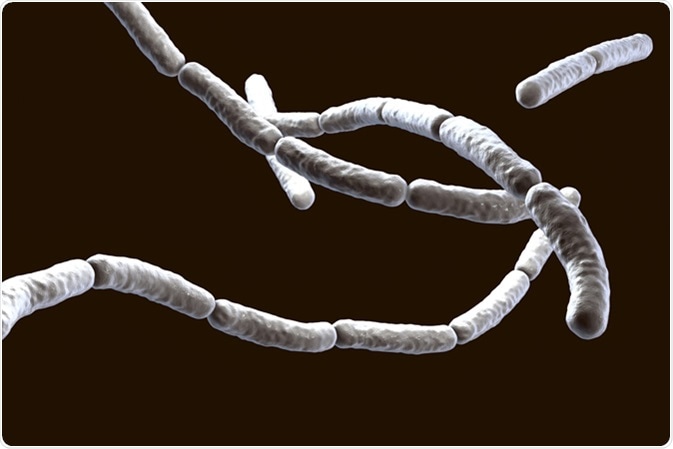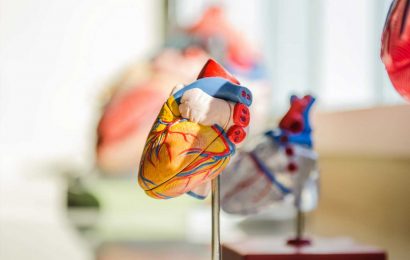Skip to:
- Do Individual Microbial Cells Show a Memory?
- Can a Bacterial Community Change its Behavior based on Previous Exposure?
- The Verdict – Is Microbial Memory Real?
- Can Microbial Memory be Harnessed?
Complex organisms have the ability to remember, meaning that information about past experiences is memorized and can be recalled. While this is established, less is known about the memory of simple, unicellular organisms like bacteria. Do they somehow have the ability to recall information about their environment, for example? At least, their past experiences appear to have an effect on their behavior.

Do Individual Microbial Cells Show a Memory?
Studies have shown that while bacteria are simple, they contain complex regulatory systems that are capable of producing different behaviors and bacteria exposed to different environments can behave differently in the same condition afterwards. So clearly, there is a possibility that bacteria have the capability to retain certain information. Potentially, this could mean that certain traits of bacteria may be controllable, and this might mean that these traits may be selected for or against depending on its impact on fitness.
Wolf et al. decided to investigate whether bacterial memory could be measured. By using an information-theory based framework to study the formation of spores in the bacterium Bacillus subtilis after exposure to 10 different “cell histories”. They found that while there was no clear link between a cell history and a specific trajectory to spore formation, there were differences in the trajectory.

Can a Bacterial Community Change its Behavior based on Previous Exposure?
Another study, by Mathis and Ackerman, tested if tolerance to salt was something that could be remembered by the bacterium Caulobacter crescentus. Here, the authors first exposed C. crescentus to a low level of salt, and then to a higher salt level after allowing the bacteria to recover for different lengths of time. The authors found that while individual cells did not seem to change their behavior based on previous exposure to salt, the community of bacteria reacted in a different way that was suggestive of memory.
Biofilms are a community of microorganisms attached to a surface and encased in an extracellular matrix. The early stage of biofilm formation involves the attachment of microbial cells to a surface, and in the bacterium Pseudomonas aeruginosa the cells that are found on the surface do not attach well. Lee et al. decided to investigate whether exposing P. aeruginosa cells to a surface would increase its attachment to the same surface later on. Here, they found that P. aeruginosa cells which were previously exposed to the surface showed stronger attachment later on, and this effect was also seen in their descendants.
Upon further investigation, the authors found that this effect was linked to intracellular cAMP levels which in turn affected type IV pili, which are necessary for surface recognition. The authors found that P. aeruginosa cells which had been exposed to the surface create oscillations of cAMP levels, which lead to the suppression of type IV pili movement, and that this effect is seen in multiple following generations. The outcome of this was that there are more cells which are able to attach to the surface, and this capability is passed on to multiple following generations.
The Verdict – Is Microbial Memory Real?
Using these limited examples, it is possible to see that the environment of the bacteria can affect their behavior. While it might not be so clear in individual cells, it seems that bacteria are able to change their behavior at the population level in response to their environment. In the case of P. aeruginosa and biofilm formation, the behavior change caused by exposure to a surface lasts for multiple following generations. Therefore, while bacteria may not strictly have a memory, changes in behavior can last for multiple generations. This is an area which should be investigated further, as exposure to antibiotics may have a similar effect on bacteria – if a bacterial community learns to tolerate an antibiotic by changing its behavior, then this is important to know as future treatment with this antibiotic may not be as effective.
Can Microbial Memory be Harnessed?
Kotula et al. developed a bacterial reporter system which would respond to its environment and then remember this response. They developed a two-component system with a trigger element and a memory element to work in E. coli. The trigger element used here was set to respond to tetracycline, and when mice harboring the E. coli system had tetracycline administered the memory element showed that the trigger element had been activated. This was stable for many generations, therefore this provides a mechanism by which gut health could be investigated without invasion.
Sources
- Wolf, D. M et al., Memory in Microbes: Quantifying History-Dependent Behavior in a Bacterium. PLOS One 2008, 3 (2), e1700. journals.plos.org/plosone/article?id=10.1371/journal.pone.0001700
- Mathis, R. and Ackerman, M., Response of single bacterial cells to stress gives rise to complex history dependence at the population level. PNAS 2016, 113 (15), 4224-4229. https://www.pnas.org/content/113/15/4224
- sciencedirect.com Biofilm www.sciencedirect.com/topics/immunology-and-microbiology/biofilm
- Lee, C. K. et al., Multigenerational memory and adaptive adhesion in early bacterial biofilm communities. PNAS 2018, 115 (17), 4471-4476. https://www.pnas.org/content/115/17/4471
- Kotula, J. W. et al., Programmable bacteria detect and record an environmental signal in the mammalian gut. PNAS, 2014, 111 (13), 4838-4843. www.pnas.org/…/4838
Further Reading
- All Microbial Cell Content
Last Updated: Aug 22, 2019

Written by
Dr. Maho Yokoyama
Dr. Maho Yokoyama is a researcher and science writer. She was awarded her Ph.D. from the University of Bath, UK, following a thesis in the field of Microbiology, where she applied functional genomics toStaphylococcus aureus . During her doctoral studies, Maho collaborated with other academics on several papers and even published some of her own work in peer-reviewed scientific journals. She also presented her work at academic conferences around the world.
Source: Read Full Article


